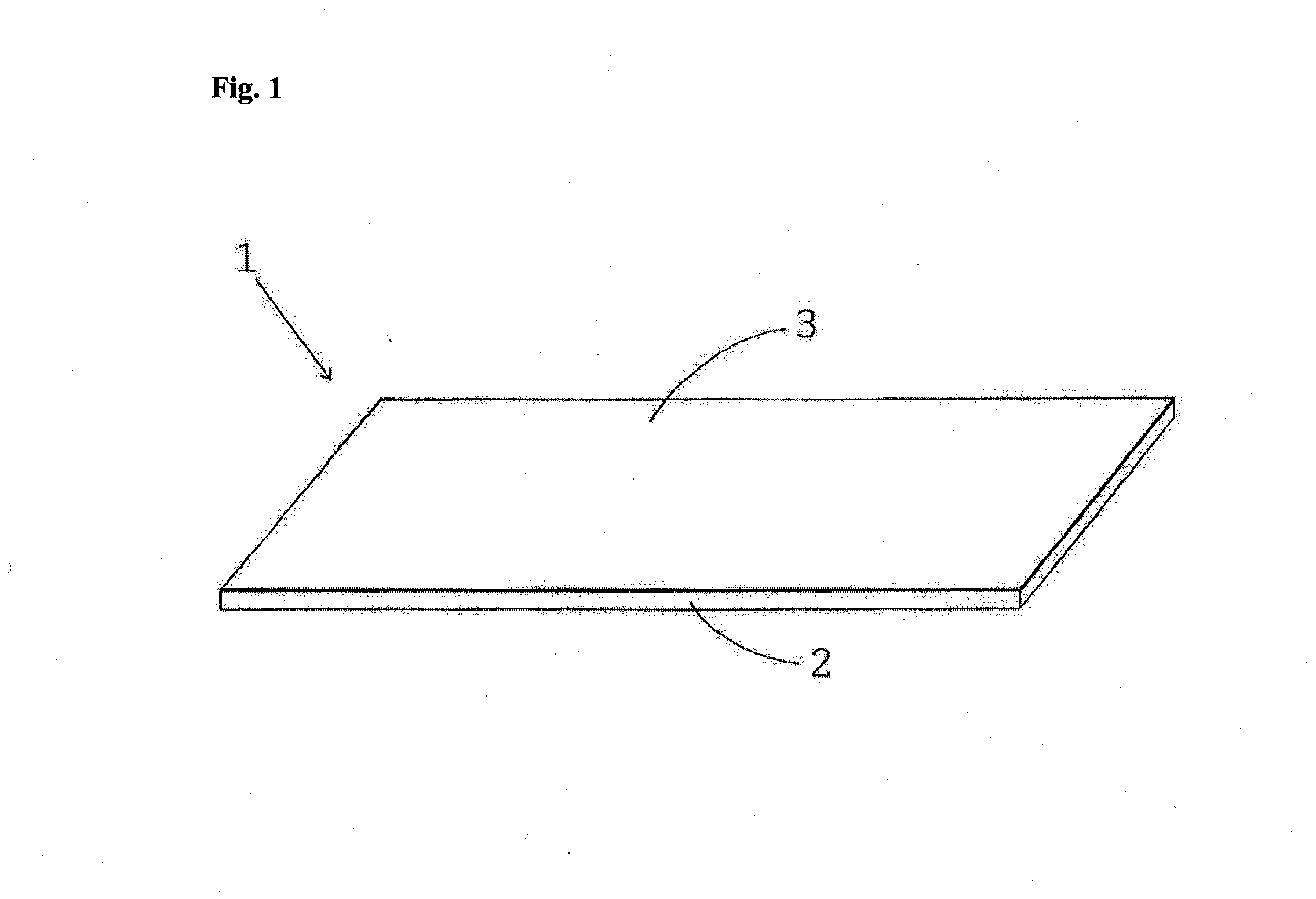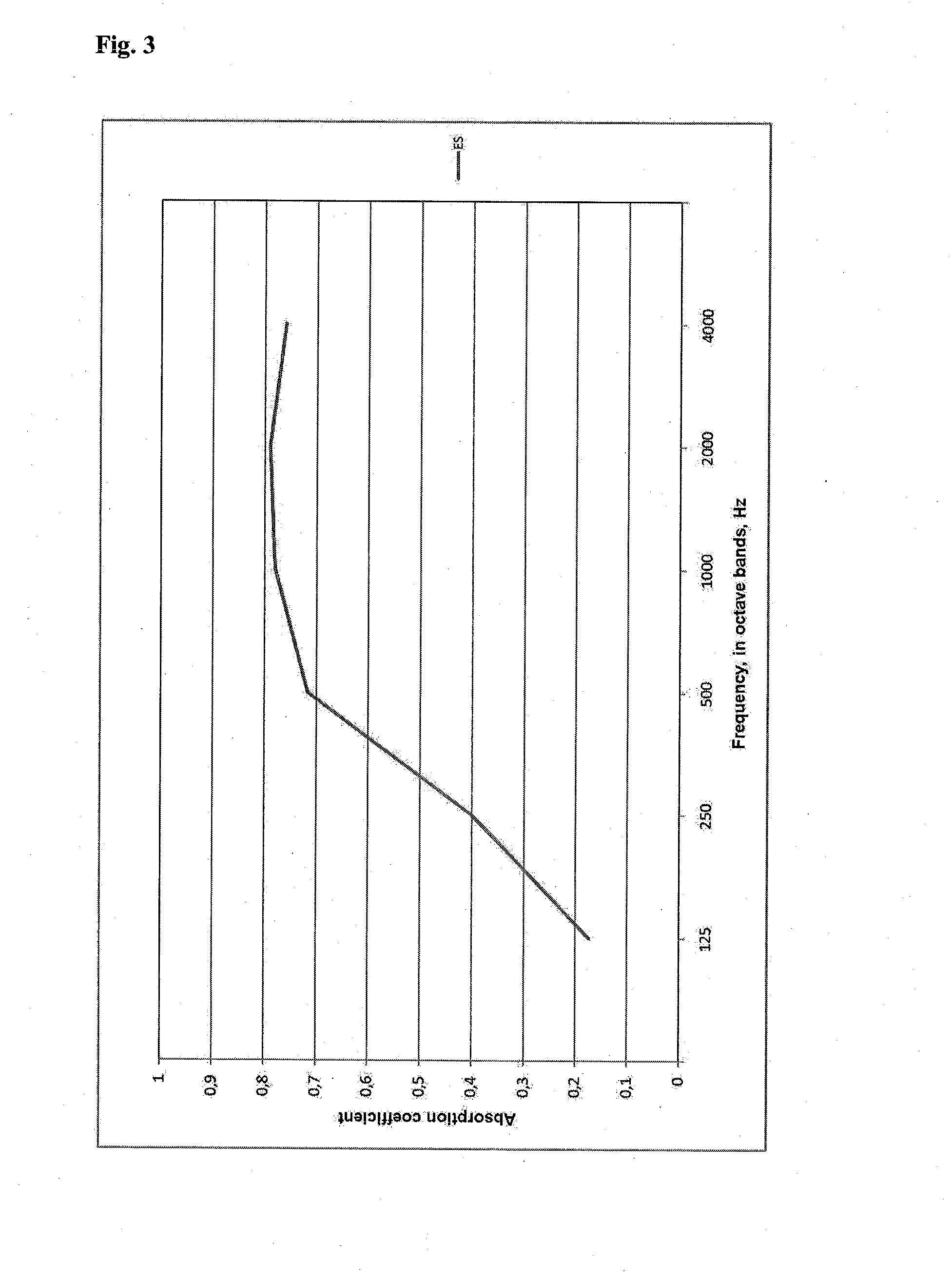Coating and its manufacturing process
a manufacturing process and coating technology, applied in the field of coatings, can solve the problems of reducing the service life of the element, so as to achieve the effect of low melting point, low melting point and low melting poin
- Summary
- Abstract
- Description
- Claims
- Application Information
AI Technical Summary
Benefits of technology
Problems solved by technology
Method used
Image
Examples
example 1
Reaction of the Coating in a Fire
[0082]The coating according to the invention, which was studied in this example, was cellulose-based and it consisted of a composition that contained polyethylene grains, carboxy-methyl cellulose, a mixture of borax and boric acid, and a conventional fire retardant. Of these ingredients, cellulose and the polyethylene-based cellular plastic grains constituted the major part of the dry matter of the composition, so that the portion of cellulose was about 60% by weight and that of grains about 40% by weight.
[0083]The coating was formed on a gypsum-based board of a thickness of 13 mm, and the thickness of the coating that was sprayed on top of it ranged between 3-20 mm (the goal: 15 mm).
[0084]The reaction of the thus formed elements in fire was studied according to the EN standard 13823:2002, whereby the results of Table 1 were obtained.
TABLE 1MeanQualityTest 1Test 2Test 3valueFIGRA0,2MJ (W / s)42.737.640.740FIGRA0,4MJ (W / s)42.734.234.437THR600s (MJ)3.23....
example 2
Initiation Sensitivity of the Coating
[0087]The coating according to the invention, which was studied in this example, was cellulosebased and it was made from a composition that contained polyethylene grains, carboxy-methyl cellulose, a mixture of borax and boric acid, and a conventional fire retardant. Of these ingredients, cellulose and the polyethylene-based cellular plastic grains constituted the major part of the dry matter of the composition, so that the portion of cellulose was about 60% by weight and that of grains about 40% by weight.
[0088]The coating was formed on a gypsum-based board of a thickness of 13 mm, and the thickness of the coating that was sprayed on top of it ranged between 4-6 mm (the goal: 15 mm).
[0089]The initiation sensitivity of these elements was tested according to the EN ISO standard 11925-2:2002, wherein the surface of the element was subjected to flames for 30 seconds, so that a filter paper was placed under the element, by means of which the formation...
example 3
Acoustic Properties of the Element
[0091]The sound-absorption coefficient (αS) of the coating that was prepared from the coating composition, according to the previous examples, was tested according to the ISO standard 354:2003, whereby the results of Table 3 were obtained, which are further illustrated in FIG. 3.
TABLE 3Frequency, f[Hz]αs1000.141250.161600.222000.302500.413150.494000.645000.766300.778000.7910000.7812500.7716000.7920000.8225000.7631500.7340000.7550000.80
[0092]On the basis of these results, the acoustic properties of the element are excellent.
PUM
| Property | Measurement | Unit |
|---|---|---|
| size | aaaaa | aaaaa |
| thickness | aaaaa | aaaaa |
| thickness | aaaaa | aaaaa |
Abstract
Description
Claims
Application Information
 Login to View More
Login to View More - R&D
- Intellectual Property
- Life Sciences
- Materials
- Tech Scout
- Unparalleled Data Quality
- Higher Quality Content
- 60% Fewer Hallucinations
Browse by: Latest US Patents, China's latest patents, Technical Efficacy Thesaurus, Application Domain, Technology Topic, Popular Technical Reports.
© 2025 PatSnap. All rights reserved.Legal|Privacy policy|Modern Slavery Act Transparency Statement|Sitemap|About US| Contact US: help@patsnap.com



